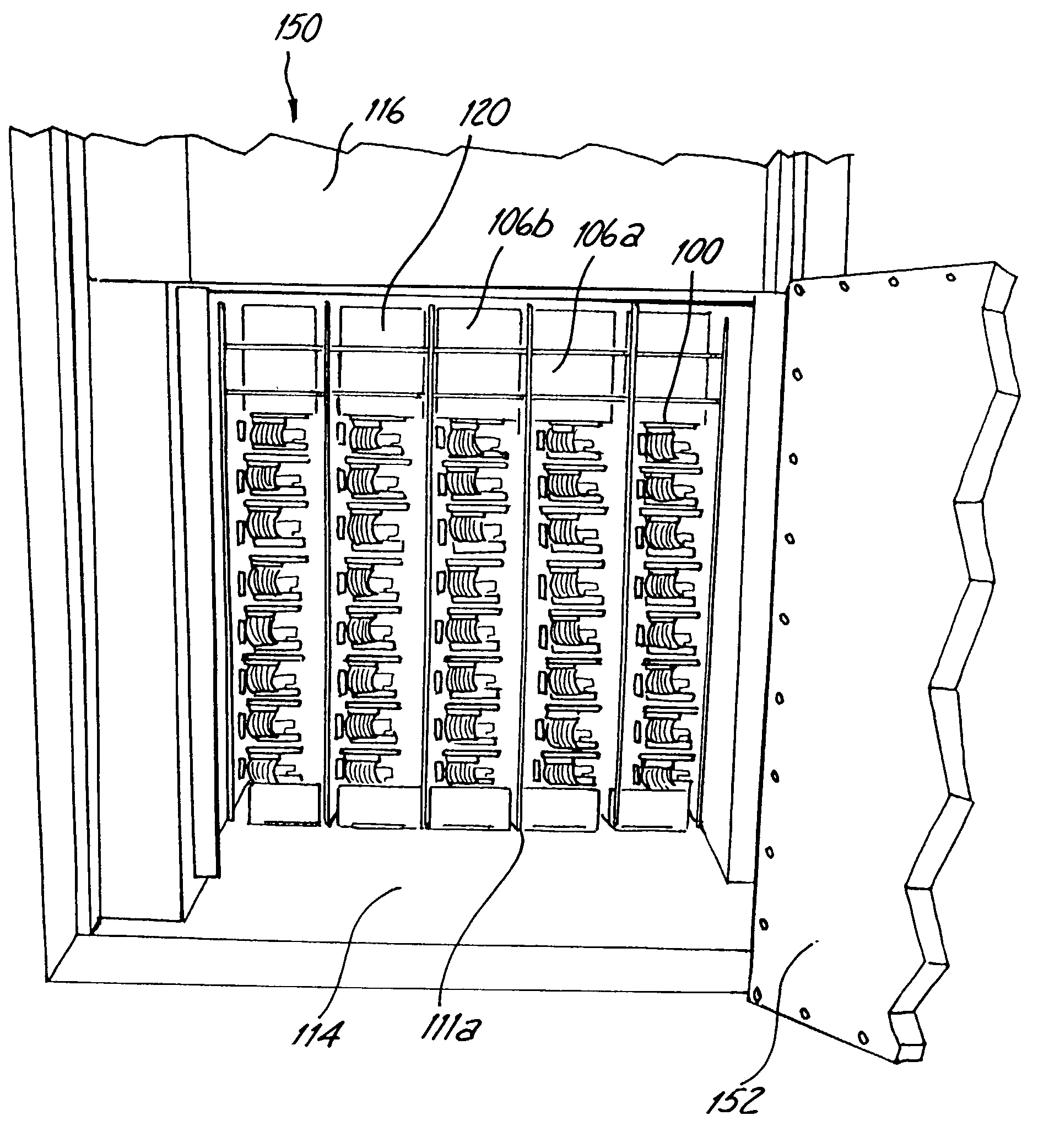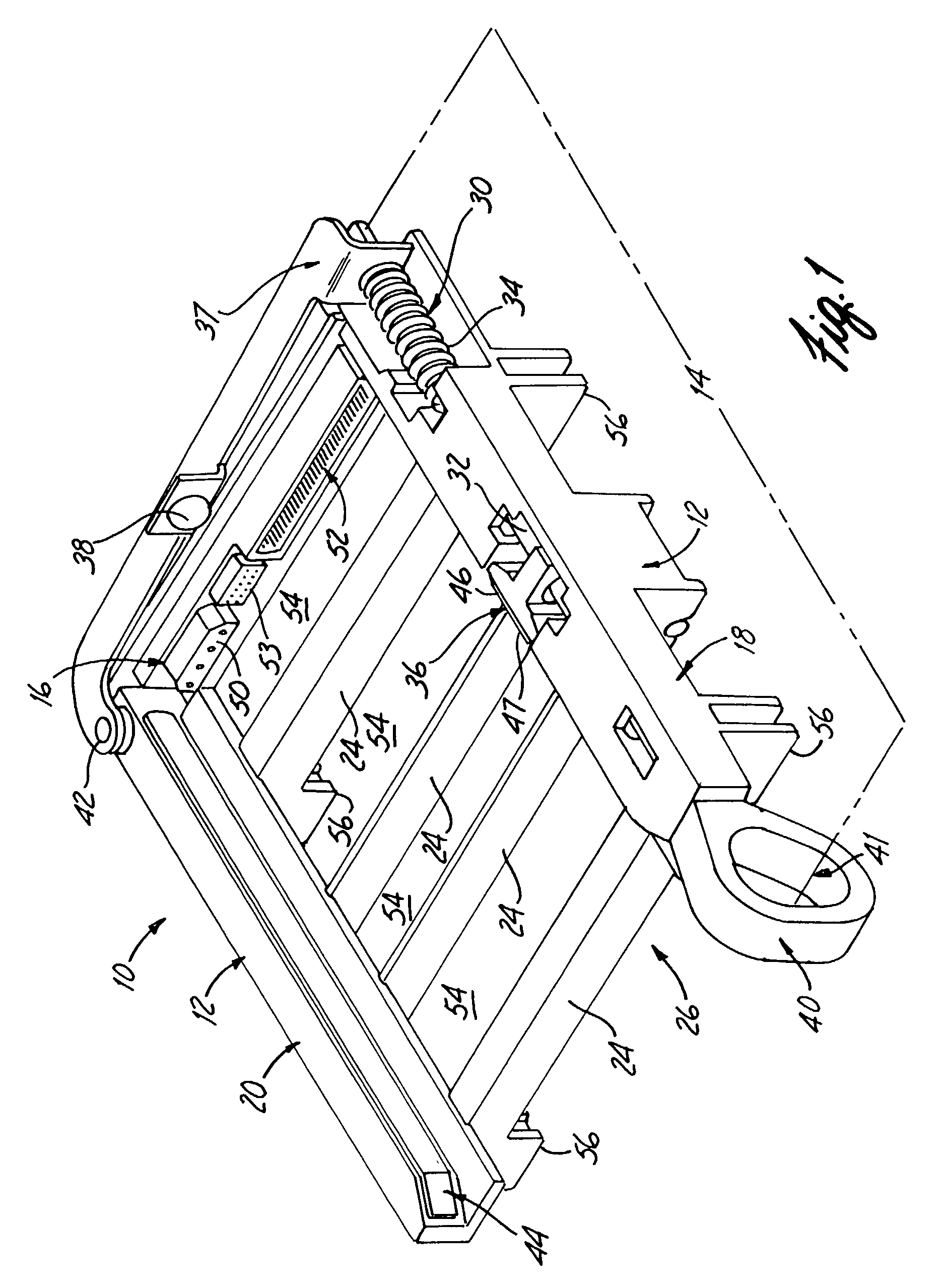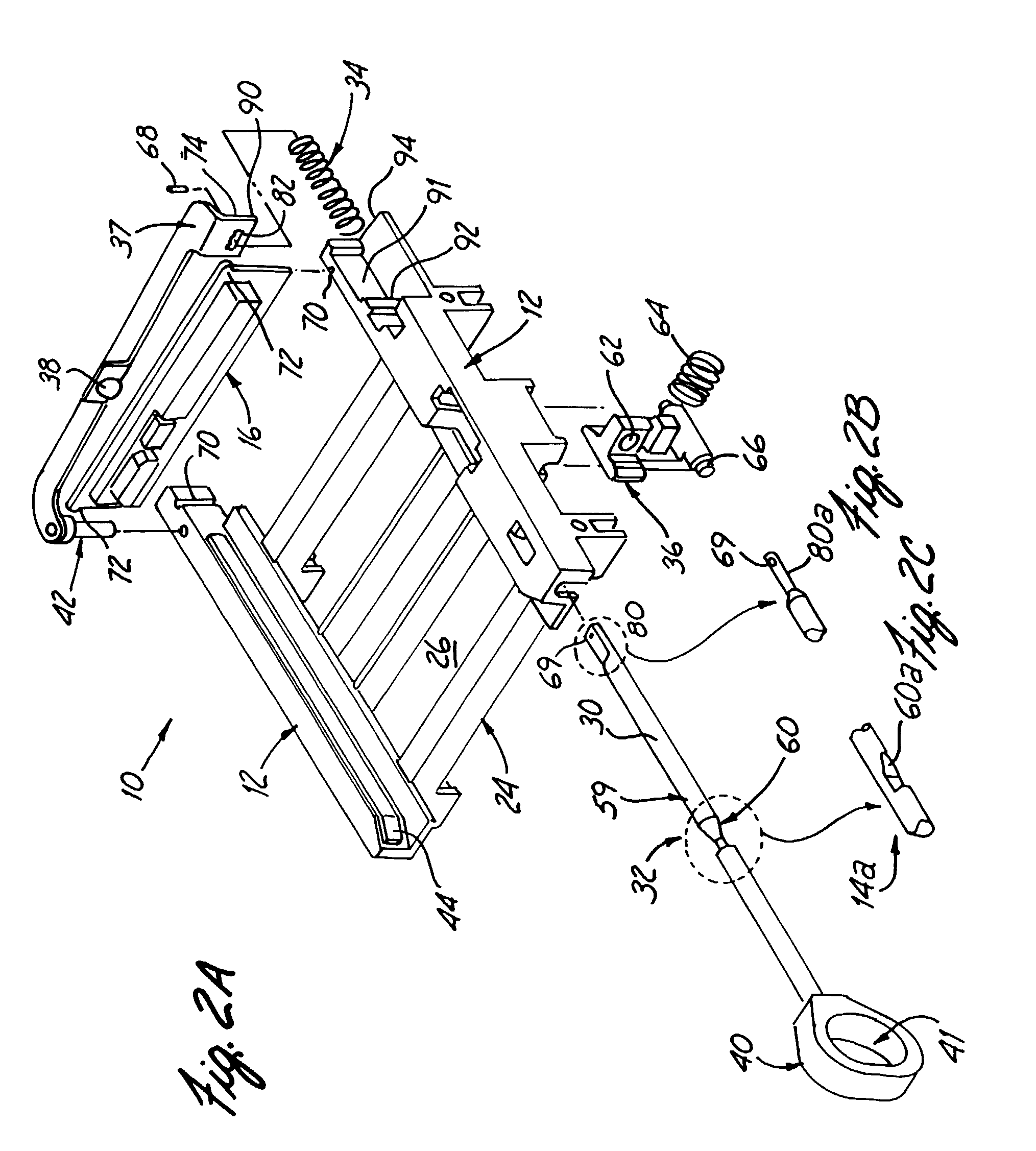Environmental test chamber and a carrier for use therein
a technology for environmental testing and test chambers, which is applied in the direction of fault location, fault location, and fault increase, which can solve the problems of limiting the flexibility of applications, all the files in the chamber are heated/cooled together, and the hard drive is usually subject to a “burning” effect, so as to achieve easy adaptation for use with different devices, reduce mass, and increase rigidity
- Summary
- Abstract
- Description
- Claims
- Application Information
AI Technical Summary
Benefits of technology
Problems solved by technology
Method used
Image
Examples
embodiment 10
[0043]FIG. 1 is a perspective view of the top, right, and front sides of one carrier embodiment 10. The carrier 10 includes a frame 12, a clamping mechanism 14, and a connector bar 16. The frame 12 comprises an “L” shaped right side frame member (“right side bar”) 18, a left side frame member (“left side bar”) 20 that is generally parallel to and coplanar with the right side bar 18, and a plurality of generally transverse cross members (“cross bars”) 24 that cooperate with the right side bar 18 and the left side bar 20 to define a rectangular test bed 26. The clamping mechanism 14 in this embodiment comprises a cylindrical operating rod 30, a linear cam 32, a linear return spring 34, a clamp pad 36, an ejection lever 37, an ejection bumper 38, a non-interfering handle 40, and a hinge 42. The connector bar or module 16 comprises a variety of electrical connections, such as a power supply port 50, an I / O port 52, and a configureable jumper port 53.
[0044]In operation, the user may firs...
first embodiment
[0055]FIG. 2A is an expanded view showing the clamping mechanism 14. FIG. 2A comprises an operating rod 30 having large diameter section 59 and a grooved section 60 that combine to form the linear cam 32. The diameter of the large diameter section 59 is designed such that the operating rod 30 can slide freely through a hole 62 in the clamping pad 36. FIG. 2A also shows an actuating spring 64 and a hinge pin 66.
[0056]In operation, the grooved section 60 is aligned with the hole 62 when the operating rod 30 is in a fully inserted or “clamping” position. In this position, there is sufficient space between the operating rod 30 and the hole 62 such that the actuating spring 64 can pivot the clamping pad 36 around the hinge pin 66 and into engagement with the hard drive. That is, the actuating spring 64 can bias the clamping pad 36 against the hard drive when the grooved section 60 is laterally aligned with the hole 62. Sliding the operating rod 30 out of the “clamping position” laterally...
second embodiment
[0060]In a second embodiment clamping mechanism embodiment, the operating rod 30 may also be contoured along its length to form the linear cam 32. In this embodiment, the sections having a greater diameter may force the clamp pad 36 to move “inward” into the test bed and into contact with the hard disk drive. The portions of the operating rod having a smaller diameter may allow the clamp pad 36 to move “outward,” which releases the hard drive. The greater diameter sections in these embodiments are positioned along the length of the operating rod 30 such that the clamp pad 36 is forced to engage the drive when the handle 40 is in the “pushed in” or “clamping” position. The smaller diameter sections are positioned along the length of the operating rod 30 such that the clamp pad 36 can release the hard disk drive when the handle 40 is in the “home” and “ejection” positions.
[0061]The return spring 34 may also be used in the second embodiment to actuate the handle 40 from an “ejection” p...
PUM
 Login to View More
Login to View More Abstract
Description
Claims
Application Information
 Login to View More
Login to View More - R&D
- Intellectual Property
- Life Sciences
- Materials
- Tech Scout
- Unparalleled Data Quality
- Higher Quality Content
- 60% Fewer Hallucinations
Browse by: Latest US Patents, China's latest patents, Technical Efficacy Thesaurus, Application Domain, Technology Topic, Popular Technical Reports.
© 2025 PatSnap. All rights reserved.Legal|Privacy policy|Modern Slavery Act Transparency Statement|Sitemap|About US| Contact US: help@patsnap.com



